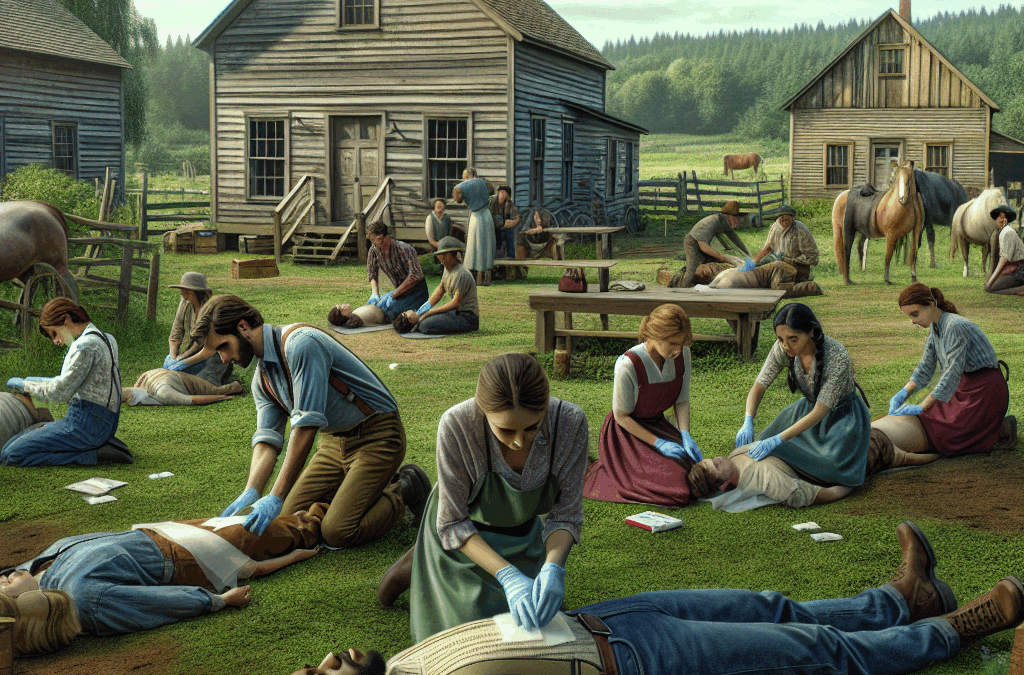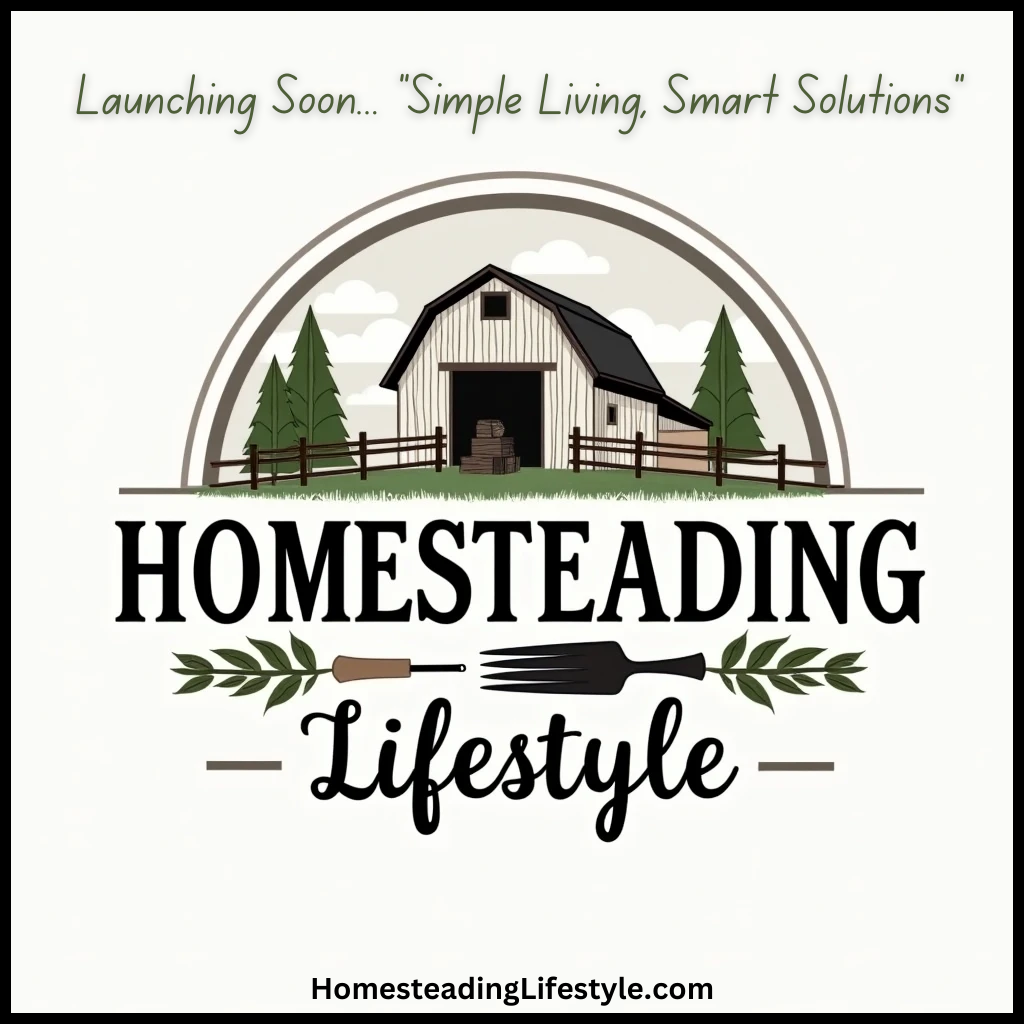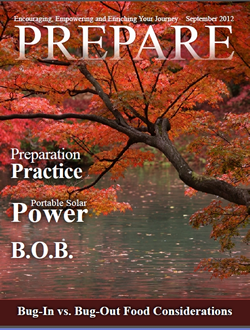Assessing and Responding to Emergencies
Understanding the Situation
When you’re out on the homestead, the first thing I’ve learned is to stay calm and assess the situation. Panic can cloud your judgment, so take a deep breath and focus. Look around, and see who is injured and what type of injuries are present. Are they serious? Minor? This initial assessment helps determine your next steps. Can you handle it yourself, or do you need professional help?
I often remind myself to check for dangers around me before rushing to help someone. For example, if someone has fallen from a ladder, is the ladder still a hazard? Are there sharp tools or animals nearby? Always prioritize safety, not just for the person in need but also for yourself.
Once I’ve assessed the situation, I communicate. I let anyone else around know what’s happening so they can assist if necessary or call 911 if the injury is severe. Like the saying goes, ‘many hands make light work’; it’s always better to tackle emergencies as a team.
Gathering Essential Supplies
Next step? Get your first aid kit ready! I can’t tell you how crucial it is to have everything you need on hand. I’ve learned the hard way that a well-stocked kit can make all the difference. Each homestead should have a basic first aid kit with items such as adhesive bandages, sterile gauze, antiseptic wipes, and a pair of disposable gloves.
I personally tailor my kit based on the activities I do around the homestead. If I’m working with livestock, for example, I’ll include extra supplies like animal antiseptic. You never know when you might need to treat a scrape or cut, either on yourself or your animals!
Also, don’t forget to check your kit regularly. It can be tempting to forget what’s inside, but no one wants to discover expired ointments or missing bandages in an emergency. I schedule a check-up of my first aid kit every few months to keep everything fresh.
Making Smart Decisions
Sometimes, you have to make quick decisions under pressure. After figuring out what’s wrong, it’s vital to determine if you can treat the issue on your own or if you need to call for help. I’ve found that trusting my instincts plays a big role in this. In a lot of cases, taking the time to treat a minor wound right away prevents it from getting worse.
You might also want to consider the severity of an injury based on symptoms. Something like a sprain can often be managed with ice and elevation, while a severe cut might need stitches. Make a call on how urgently to act, keeping in mind the resources available to you.
It’s key to remember that each situation is unique. In the heat of the moment, I sometimes jot down a quick plan of action. Keeping a level head and being adaptable to changes can save a lot of worry later!
Basic First Aid Techniques
Cleaning and Dressing Wounds
When it comes time to clean a wound, I always start by washing my hands thoroughly. It’s a simple step, but the importance of hygiene cannot be overstated, especially when dealing with cuts. After my hands are clean, I rinse the wound gently under lukewarm water to remove any dirt.
Once it’s clean, I apply antiseptic to the area and let it dry for a minute. I typically use adhesive bandages for smaller cuts, while larger wounds might need gauze and tape. In my experience, it’s always best to dress a wound even if it seems minor—better safe than sorry!
Lastly, I keep an eye on the wound as it heals. If it becomes increasingly red or swollen, I won’t hesitate to seek medical advice. It’s important not to dismiss signs of infection.
CPR and Choking Relief
Cardiopulmonary Resuscitation (CPR) is a lifesaving technique that I’ve found invaluable. It’s pretty daunting at first, but with some practice, it becomes clearer. If someone is unresponsive, you first call for help, then begin chest compressions while ensuring their airways stay open.
For choking, I’ve learned to act quickly. The Heimlich maneuver is the go-to here. It’s comforting to know that these skills can literally save a life. I try to practice these techniques every few months, and I encourage anyone around me to do the same—because you never know when you might need to use them!
I also advocate for taking a certified CPR course. Having trained professionals guide you can solidify your understanding and prepare you for various scenarios. Hands-on experience offers incredible peace of mind before encountering a real emergency.
Managing Sprains and Strains
Living on a homestead means you’re likely to encounter your fair share of sprains and strains, trust me. The RICE method—Rest, Ice, Compression, Elevation—has worked wonders for me. Whenever someone gets injured, I immediately think about how to implement this method properly.
The first step is to rest the affected area. I recommend avoiding any movement that could exacerbate the injury. Then comes icing—applying a cold compress helps reduce swelling. Wrap ice in a towel and never place it directly on the skin to avoid frostbite!
Once that’s underway, I wrap the injury lightly with compression bandages and encourage elevation, particularly for sprained ankles. Elevating the injured limb helps manage swelling and pain. And of course, I always remind folks to seek medical help if the pain continues past a few days or if the injury looks serious.
When to Seek Professional Help
Identifying Serious Conditions
It’s crucial to recognize when a situation requires more than just basic first aid. Conditions like severe bleeding, broken bones, or unconsciousness are serious. If you encounter these scenarios, call for help immediately. In my experience, the sooner help arrives, the better.
I’ve also learned to keep an eye out for symptoms of shock. Rapid heartbeat, cold sweat, and pale skin are indicators that someone is in a dire situation. In these moments, I stay with the person and try to keep them calm until professional help can take over.
Knowing when to reach out for medical assistance can be lifesaving. I advise everyone to trust their instincts and not play down any symptoms that seem alarming. Better to err on the side of caution!
Understanding Follow-up Care
After any emergency, follow-up care is vital to recovery. Once someone has received initial care, make sure to monitor their condition afterward. I often check in regularly, assessing their progress and looking for any signs that the injury isn’t healing properly.
Whether it’s reminding someone to take their medications or making sure they follow the doctor’s advice, staying involved in their recovery can really help. Plus, it’s often comforting for the person going through recovery to know someone is looking out for them!
If physical therapy is recommended, I’ll help coordinate those visits to ensure they happen. It’s a way to show you care and help them get back on their feet faster.
Creating a Safe Environment
Lastly, prevention is key! An ounce of prevention is worth a pound of cure is something I live by. To reduce the likelihood of accidents, I assess my homestead regularly for hazards. Whether it’s ensuring there are proper barriers around fire pits or clearing paths of debris, safety is always my priority.
I also think a lot about educating everyone involved in homesteading, particularly children, about basic safety. Teaching them how to properly use tools or be cautious around animals can prevent many accidents down the line. Plus, who doesn’t love a good workshop?
Finally, I advocate for regular safety drills just as you would in an office environment. They can be a bit awkward, but trust me, they’re worth it. Being prepared can make all the difference when the unexpected happens!
FAQs
1. What should I include in my homestead first aid kit?
Your first aid kit should ideally include adhesive bandages, gauze pads, antiseptic wipes, medical tape, and disposable gloves. Personalize your kit based on your specific needs and activities on the homestead!
2. How can I tell if an injury is serious?
Look for symptoms of severe bleeding, broken bones, or unconsciousness. Pay attention to signs of shock, like pale skin or rapid breathing. If in doubt, it’s better to seek professional help immediately!
3. What is the RICE method for treating sprains?
The RICE method stands for Rest, Ice, Compression, and Elevation. Rest the injured area, apply ice to reduce swelling, use a compression bandage, and elevate the injury above heart level if possible.
4. Why is CPR training important?
CPR training equips you with lifesaving skills that may be needed in emergencies. Knowing how to perform CPR can make a huge difference in critical situations, offering you confidence and preparedness.
5. How do I prevent accidents around the homestead?
Regularly assess your environment for hazards, educate others about safety, and conduct drills if appropriate. Make safety a top priority and encourage open communication about potential dangers.





